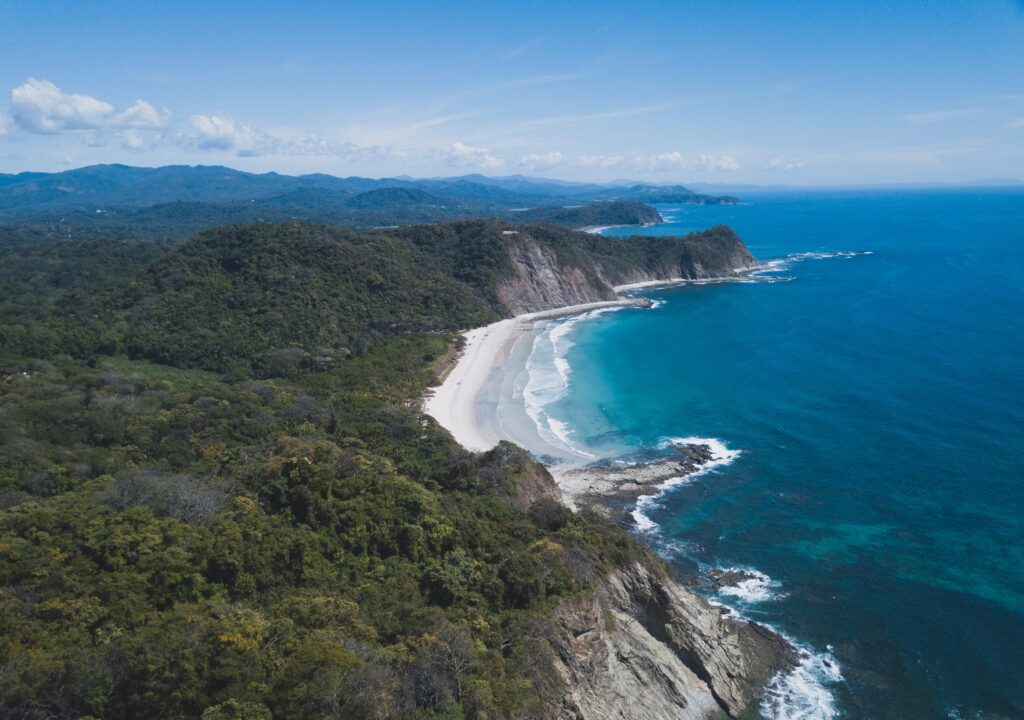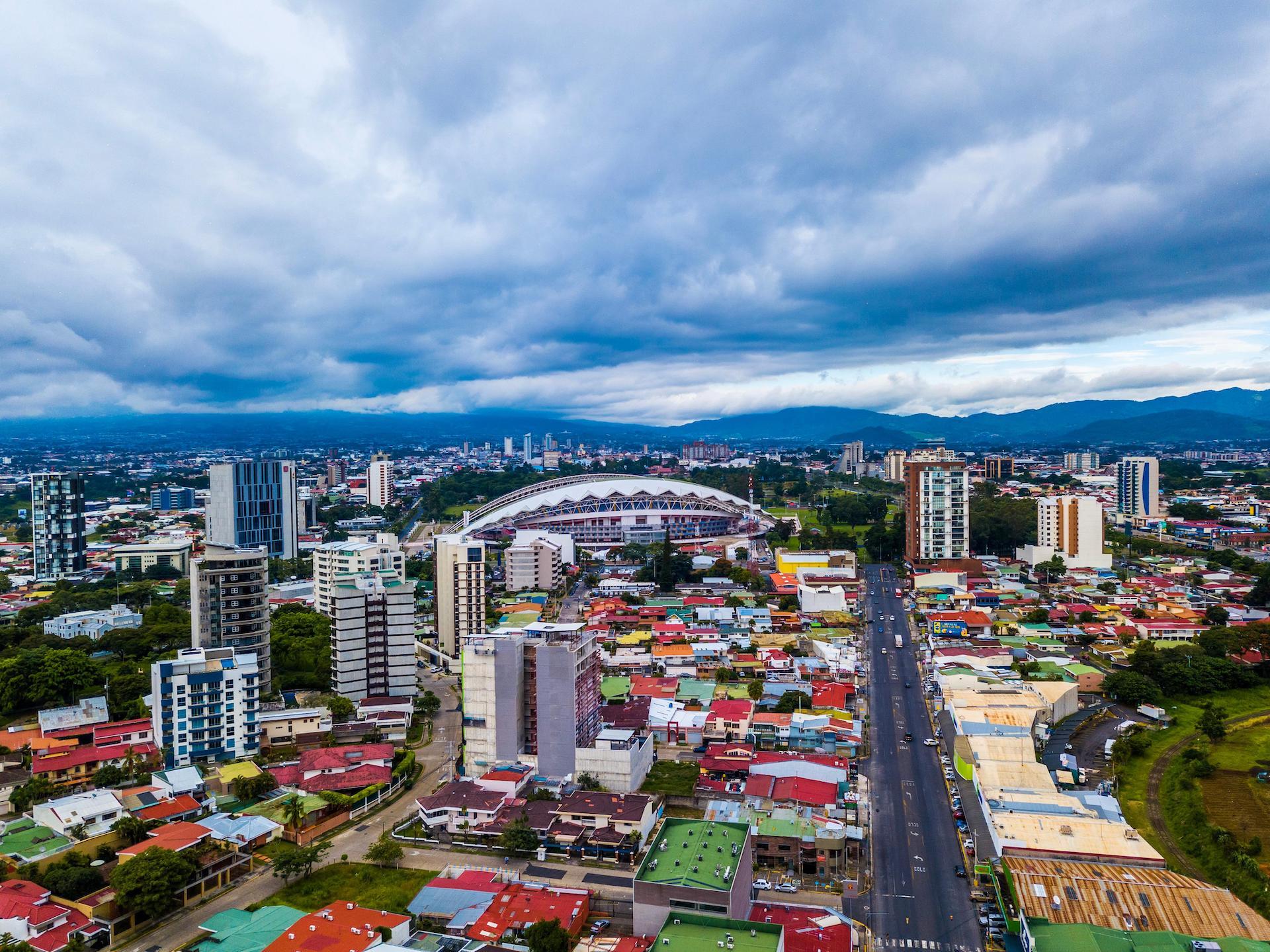There’s a folkloric national hymn about Costa Rica from the 1930s that you’ll hear at most festivals, school presentations and holiday celebrations.
The song, “Mi Linda Costa Rica” (“My Pretty Costa Rica”), written by Nicaraguan singer Tino López Guerra, includes the refrain: “For being so pretty they call Costa Rica / The Switzerland of Central America.”
Though younger generations of ticos, as Costa Ricans are known, consider the song outdated, the nickname has stuck. Costa Rica continues to be called the Switzerland of Central America in news reports and books about the small Central American nation.
There are some comparisons. Costa Rica is a peaceful, progressive, neutral nation with no army that is and has been — for generation after generation — a beacon of stability in a region often marked by political and social unrest.
This was by design. Following the conclusion of the nation’s civil war in 1948, President José Figueres Ferrer, a coffee farmer who led the revolution, established principles for the future of Costa Rica. The national military was abolished. Women were given the right to vote. An independent supreme electoral tribunal was created, and a new constitution was written.
The post-revolution Costa Rica would prioritize government funding for education, health, social programs and the environment. Figueres said in 1948: “It is time for Costa Rica to return to the traditional position of having more teachers than soldiers.”
Economic flourishing
Now, 74 years later, those pillars of social welfare, democracy and stability remain intact in Costa Rica. The Central American country ranks among the highest in Latin America in terms of literacy, life expectancy, government transparency and environmental protectionism.
“Thirty-two years ago when the first free-trade zones law was enacted in Costa Rica, we exported just a few agricultural products such as bananas, pineapples and coffee,” says Ronald Lachner, vice chair of the Association of Free Trade Zone Companies of Costa Rica (AZOFRAS). “Now, the diversification of Costa Rican export products is enormous. Today, our principal export products are medical devices, something that no one would have imagined years ago.”
As a result, economic and development opportunities in Costa Rica are flourishing. In July, Investment Monitor ranked Costa Rica as the top nation in the world on their Inward Foreign Direct Investment Index, which measures a country’s inbound foreign investment against gross domestic product. The biggest winners are some of the smallest countries: Costa Rica is followed by North Macedonia, the United Arab Emirates and Croatia.
The report says almost two-thirds of Costa Rica’s total inbound greenfield FDI in 2021 came from the sectors of technology, business and professional services, and life sciences. “Although the country continues to be a key outsourcing hub, investors are seeing its potential for manufacturing and R&D operations, particularly relating to life sciences and tech,” Investment Monitor wrote.
Costa Rica received foreign direct investment in 2021 from U.S. companies Intel Corp., which announced a new $250 million expansion of its existing facility in the country, and Concentrix, which announced it was creating 1,000 new jobs in Costa Rica in the first half of 2021. Other recent tech investments include global companies such as Hewlett Packard, Uber and Amazon, which employs 18,000 people in Costa Rica, Lachner says.
In addition to technology investment, the Costa Rica medical services and devices industry is booming in terms of investment and exports. In 2021, Terumo BCT announced the opening of a new medical device product manufacturing facility that would create 700 jobs, and Moog, another U.S.-based medical devices company, announced it would create 600 more jobs for software development engineers at its research and development center located in one of the country’s free-trade zones.

“Outward-looking model”
According to the Investment Promotion Agency of Costa Rica (CINDE) in 2000, there were only eight medical technology companies in Costa Rica. As of 2021, there were 88 such companies, which included a workforce of more than 38,248, up from 1,500 in 2000. Medical devices are now the country’s top exported product.
“Since the 1990s, the economic strategy in Costa Rica has been an outward-looking model, one open to foreign trade and foreign direct investment,” says Alejandro Abarca, a Costa Rican economist, data analyst and former government advisor.
“It’s not unusual to see the Costa Rican president and high-ranking ministers meeting with CEOs from other countries or large companies seeking to bring investment to the country,” he says. “Carlos Alvarado, who just completed his term as Costa Rica’s president, secured the biggest Microsoft center in all of Latin America. This wasn’t just luck. This was a process of conversations that went on for several years.”
Microsoft, which has operated in Costa Rica for 28 years, had just 60 employees in the country in 2018, but now has 1,500.
“Because of the enormous talent, potential and growth that we have witnessed since our arrival in the country, we have chosen Costa Rica for Microsoft’s largest operations in Latin America. Here, we have established a dynamic platform to develop qualified and high-value talent and we’re betting on Costa Ricans, by placing our Latin American regional centers here, for both Technical Customer Service and Internal Sales,” says Ineke Geesink, Microsoft Country Manager in Costa Rica.
The Microsoft investment, as well as other technology, medical devices and services sector investments that are pouring into Costa Rica, are a result of the country’s reputation for stability and a qualified and educated workforce, Abarca says.
“The most important pillars of the economic model are stability, the good image the country has and strong human capital that is available at a low cost,” he says. “There are great engineers, technical and skilled workers in the country, for example, that speak English and you can pay at local wages. This makes Costa Rica a great outsourcing option.”
Costa Rica’s poverty has declined as investment rises
Companies flooding in
Amid a growing list of accolades and recognition for CINDE, in March, the United Nations International Trade Center (ITC) ranked the Costa Rican investment promotion agency as the highest performer among 85 international organizations reviewed for the fifth year in a row.
In 2021, CINDE reported a record 103 new investment projects, a 30% increase from 2020, which created 19,725 new jobs in the country. A total of 32 new companies committed to invest in Costa Rica in 2021, while greenfield projects have grown at an annual rate of 15% over the last five years, according to CINDE.
Poverty has declined in Costa Rica as foreign investment has increased since 1990, with the introduction of the free-trade zones. According to AZOFRAS, the average salary for the approximately 190,000 employees working at more than 400 multinational companies within free-trade zones is $1,626 per month — more than three times the minimum wage.
The free-trade zones, where foreign companies are granted a series of tax exemptions, have been a central piece of Costa Rica’s economic success. Companies operating in the free-trade zones accounted for almost 12% of the national gross domestic product in 2021, according to the Costa Rican Foreign Trade Promoter.
“Nine out of every 10 jobs created in Costa Rica in 2021 were created by companies that operate in free-trade zones,” Lachner says. “They are the principal motor for the economy and principal sector in terms of employment generation. More than half of the country’s total exports come from free-trade-zone companies.”
In April, Costa Rica passed a new law to provide more tax and logistical incentives to companies that set up operations in free-trade zones outside of the country’s main metropolitan area. This includes a lower initial investment minimum, expedited permitting and reduced rates for social tax contributions. One of the hopes is that the new law will encourage companies to set up sustainable theme parks in regions where the country receives large amounts of tourists, such as the Pacific coast, Lachner says.
“These could be canopy or zipline parks, or even something as big as a Disney World,” Lachner says. “The idea is that these parks are in harmony with nature and dedicated to the enjoyment of Costa Rica’s biodiversity.”
Costa Rica’s tourism industry welcomes around 3 million tourists each year, and a robust agriculture industry produces and exports goods such as pineapples, bananas and coffee. Additionally, the country is a world leader in renewable energy production and carbon neutrality and, since 2014, has annually generated around 98 to 99% of its electricity with clean sources such as hydropower and wind.
While investment continues to grow, one thing Costa Ricans and multinational companies can depend on is stability, both in the national economy and political realm.
“Many Costa Ricans that leave to study elsewhere often return to Costa Rica because they know there will be jobs and political stability,” Lachner says. “Here we don’t have the threat of a populist government coming in with outlandish ideas to disrupt the system. What we have is a robust system that maintains stability and is proven to function.”
Read more
Sign up to keep up to date with ReThink Q.







